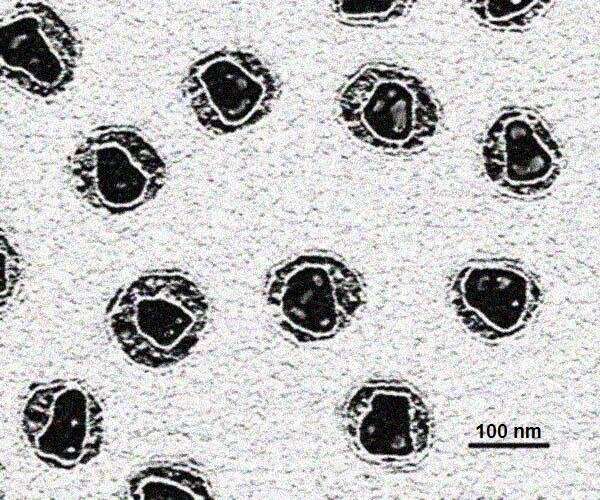Effect of small polyanions on retroviruses

A retrovirus is a virus that inserts a copy of its genome into the DNA of a host cell that it invades, thus changing that cell's genome. Once inside the host cell's cytoplasm, the virus uses its reverse transcriptase enzyme to produce DNA from its RNA genome, the reverse of the usual pattern, thus retro. The host cell then treats the viral DNA as part of its genome, transcribing and translating the viral genes along with the cell's genes, producing the proteins required to assemble new copies of the virus. The new DNA is then incorporated into the host cell genome by an integrase enzyme, at which point the retroviral DNA is referred to as a provirus.
Retroviruses assemble immature particles either in the cytosol or at the plasma membrane of the host cell. Betaretroviruses, including Mason-Pfizer monkey virus (M-PMV) and mouse mammary tumor virus (MMTV), are representatives of the morphological type D, which assembles intracytoplasmic A-type particles (ICAPs) in the pericentriolar region.
"It was thought that the assembly of immature retroviral particles is stimulated predominantly by protein–protein and protein–nucleic acid interactions of CA–CA and NC–viral genomic RNA, respectively. An increasing amount of evidence, however, shows that interactions of proteins with small molecules also take an essential place in the stimulation of retroviral hexameric lattice formation. The combination of biochemical and structural data provided evidence that one of the small molecules, inositol hexaphosphate (IP6), affects the assembly of HIV-1 immature particles," says one of the researchers Dr. Michaela Rumlová from the University of Chemistry and Technology Prague.
Data showed that in contrast to certain structural similarities in the segment connecting the CA–NC regions, only some retroviruses evolved a strategy of using small polyanionic molecules as stabilizers of the hexameric immature lattice. While the assembly of immature particles of HIV-1, and most likely other lentiviruses, is stabilized by IP6 in a concentration-dependent manner, with a peak at the ratio of protein hexamer:IP6 of 1:1, the assembly of the members of alpharetroviruses and gammaretroviruses RSV and MLV, respectively, was found to also be enhanced by polyanions, but the mode of interactions remains unclear.
"Our results suggest that the assembly of immature particles of RSV and MLV was indeed stimulated by the presence of myo-inostol hexaphosphate and myo-inositol, respectively. In contrast, no effect on the assembly of M-PMV as a betaretrovirus member was observed," researchers conclude.
More information: Alžběta Dostálková et al, Effect of Small Polyanions on In Vitro Assembly of Selected Members of Alpha-, Beta- and Gammaretroviruses, Viruses (2021). DOI: 10.3390/v13010129
Provided by University of Chemistry and Technology Prague

















